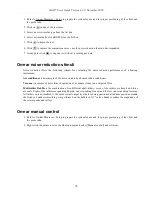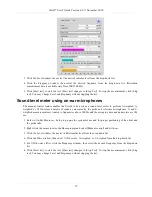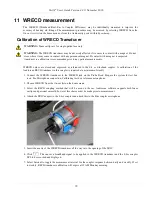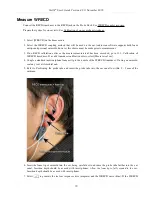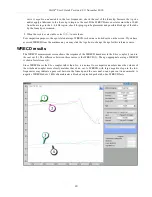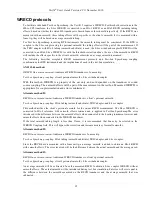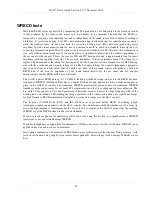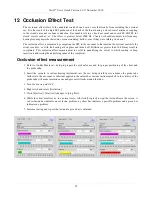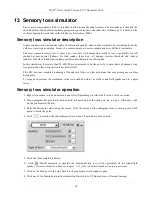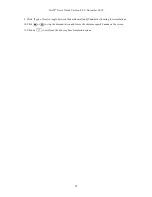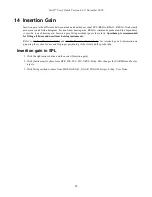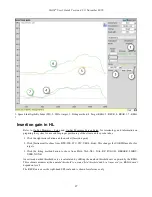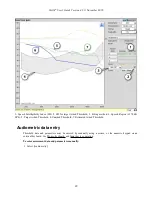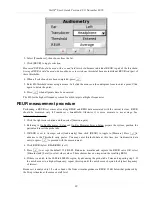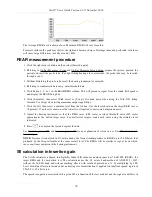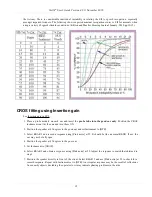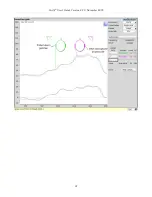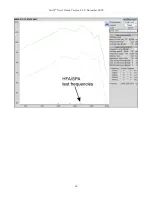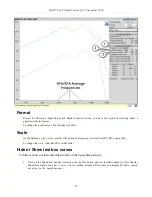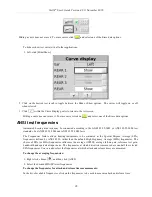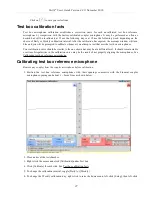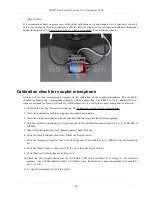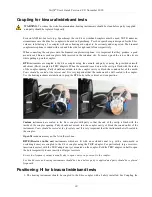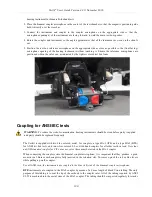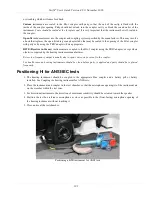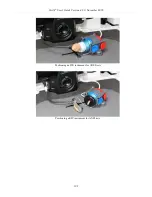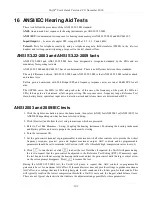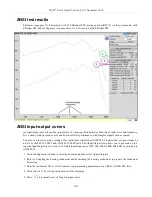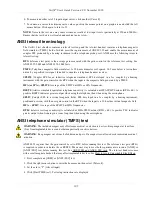
Verifit
®
User's Guide Version 4.8
©
November 2016
The Average REUR used is shown above. Measured REUR will vary from this.
For small children the peak may shift to the right and become sharper. Drainage tubes and perforated ear drums
will cause large differences - usually around 1 kHz.
REAR measurement procedure
1. Click the right mouse button and then select [Insertion gain]
2. Referring to On-Ear Measures - Setup and On-Ear Measures Screen Setup, prepare the system, position the
patient and insert the probe tube. (For tight-fitting hearing aids or earmolds, the probe tube may be inserted
through a vent.)
3. Without disturbing the probe tube, insert the hearing instrument or earmold.
4. Referring to Audiometric data entry, enter threshold data.
5. Click button 1, 2, or 3 in the REAR/REIG column. This will present a signal from the sound field speaker
and display the REAR Setup box.
6. Click [Stimulus], then select [Pink noise] or [Swept]. Use pink noise when using the NAL-NL1 fitting
formula. Use Swept when testing maximum output capabilities.
7. Click [Level], then select a stimulus level from the list box. Use the level shown on the target REIG curves
(if present). If no level is shown, use the lowest level required to overcome background noise.
8. Adjust the hearing instrument so that the REIG curve (SPL scale) or Aided threshold curve (HL scale)
approximates the dotted target curve. For multi-level targets, match each curve using the stimulus level
indicated.
9. Press
to complete the test and capture the data.
See Insertion gain in SPL and Insertion gain in HL for an explanation of screen curves. See SII calculation in
Insertion gain
NOTE:
Because it is analyzed in 1/3 octave bands, the Noise stimulus produces a REAR up to 12 dB below that
produced by the Swept stimulus at the same overall level. The REIGs will be similar except at levels which
cause non-linear operation of the hearing instrument.
SII calculation in Insertion gain
The Verifit calculates a Speech Intelligibility Index (SII) value for unaided speech at 70 dB SPL (REUR), the
target REIG and for each aided test. The calculations use the 1/3 octave band method of ANSI S3.5 –1997
without the 160 Hz band and without masking effects with results expressed as a % by multiplying by 100.
Level distortion effects are included but no hearing loss desensitization is applied. An idealized speech region of
LTASS +/- 15 dB is used.
The speech recognition associated with a given SII is a function of the test material and the cognitive abilities of
90
Summary of Contents for verifit
Page 1: ...Audioscan Verifit User s Guide 4 8 November 2016...
Page 17: ...Verifit User s Guide Version 4 8 November 2016 EC Declaration of Conformity 17...
Page 92: ...Verifit User s Guide Version 4 8 November 2016 92...
Page 94: ...Verifit User s Guide Version 4 8 November 2016 94...
Page 107: ...Verifit User s Guide Version 4 8 November 2016 Telecoil test results 107...
Page 123: ...Verifit User s Guide Version 4 8 November 2016 123...
Page 148: ...Verifit User s Guide Version 4 8 November 2016 148...
Page 149: ...Verifit User s Guide Version 4 8 November 2016 149...
Page 159: ...Verifit User s Guide Version 4 8 November 2016 159...

